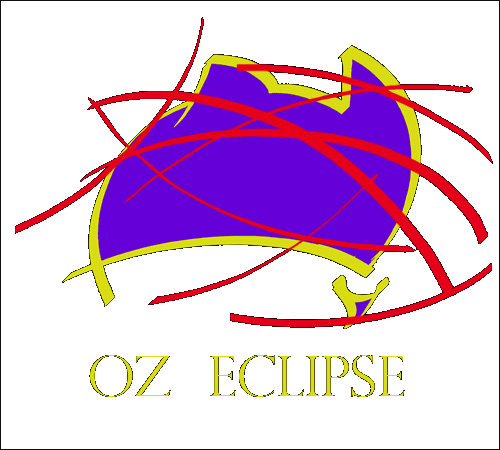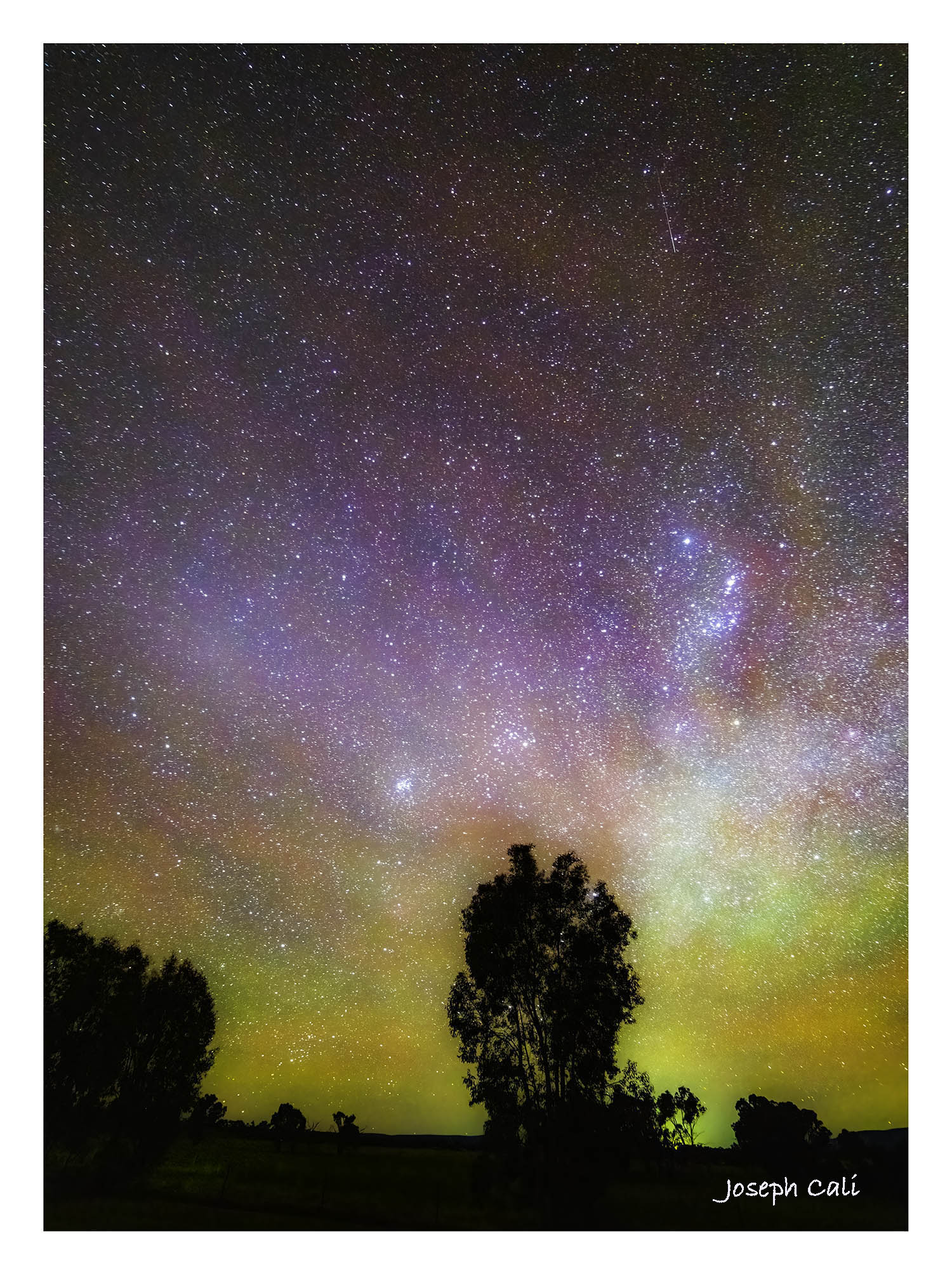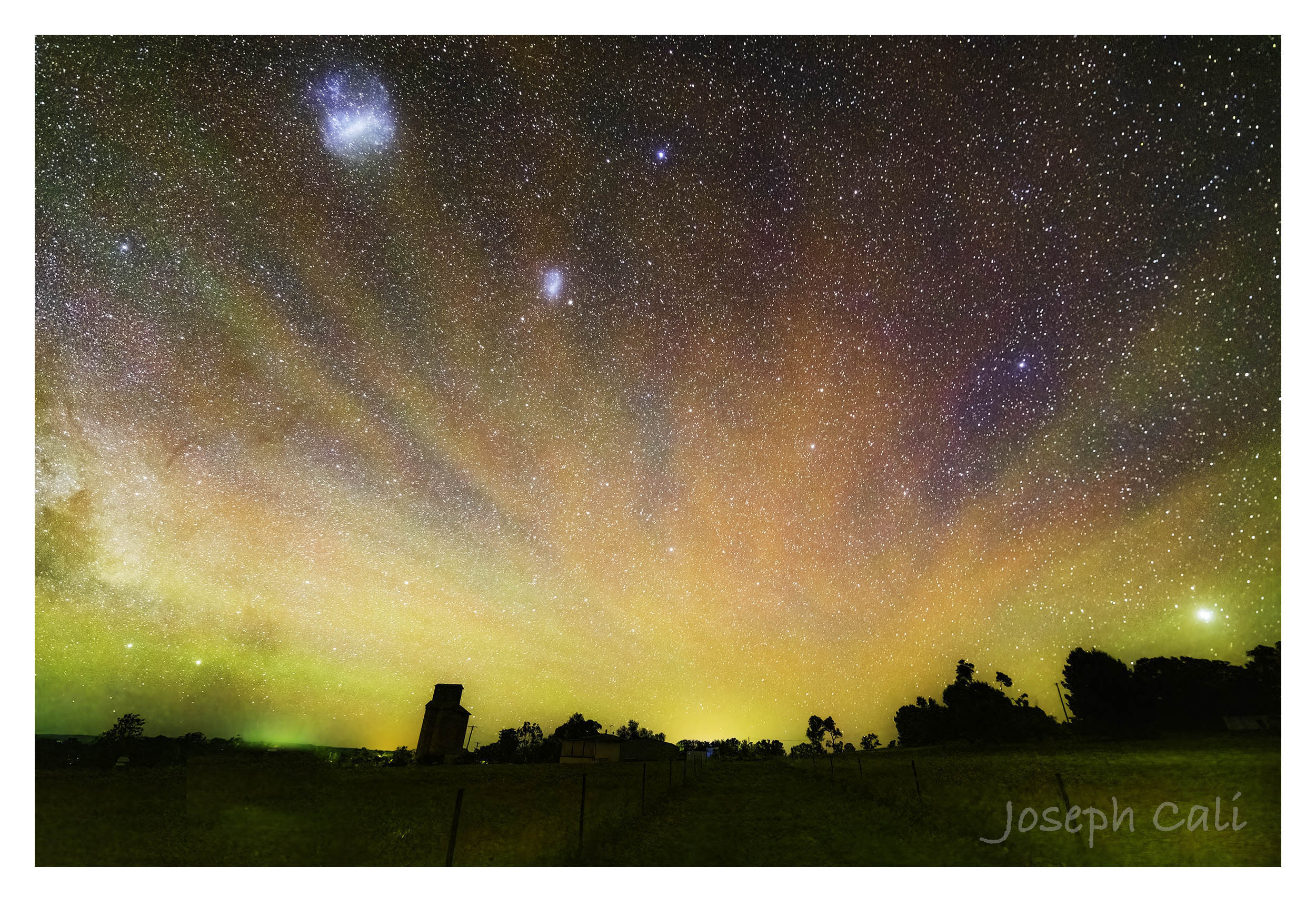Aurora (?) no it's airglow, on 30/31 October 2021
The
Sun has been very active lately. I've been keeping my eye on the
two
orbiting LASCO coronagraphs. Following the a large coronal mass
ejection on 28 October, I sent out a heads up to the Yass Valley
Astronomical Society members to be on the lookout for an Aurora
Australis display on the night of Saturday 30 October around and after
midnight. Based on the solar wind predictions, it
was predicted to arrive at the Earth's atmosphere at 11pm at a
Kp=5 intensity and strengthen to 6 during the night. the Kp scale is a scale used
to describe the strength of geomagnetic storms. At Kp=4,
and at my
latitude 34 south, the aurora is detectable photographically in short
exposures looking south. At Kp 5 it is easier and at Kp 6, it can cover
the entire sky as was supposed to have occurred that night. I might have been looking for an
aurora, what I got was a major airglow event and no aurora. Airglow is
chemiluminescence. Cosmic rays and solar radiation break the molecular
bonds of oxygen, O2 and nitrogen, N2 into their consituent
atoms. The energy required to break these strong bonds is
released when these atoms recombine into molecules again. This is seen
as a glow that occurs at around 90km above the Earth's surface.
The Sun had been quite active during October and so I was
keeping my eye on the SOHO LASCO C3 wide field coronagraph
camera. Just after 16:00UT on October 28, a large class X1 flare
erupted propagating in the general direction of Earth(left
(16:30UT) photo below). By 23:00UT the cosmic ray wave had hit Earth
causing all the noise visible in the right hand(23:18UT) photo. In that
photo, the visible extent of the flare on the image is about 25 million
km. However, the flare was propagating towards us so in reality it was
much greater.
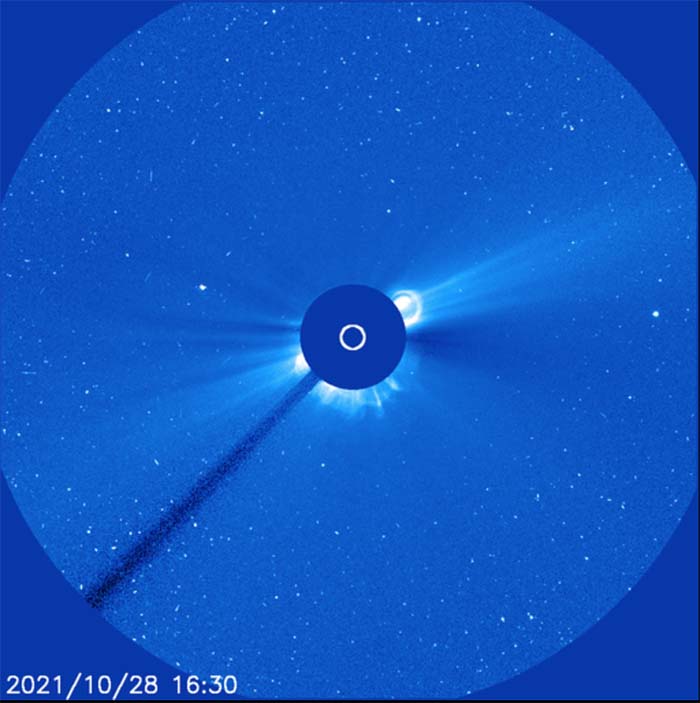
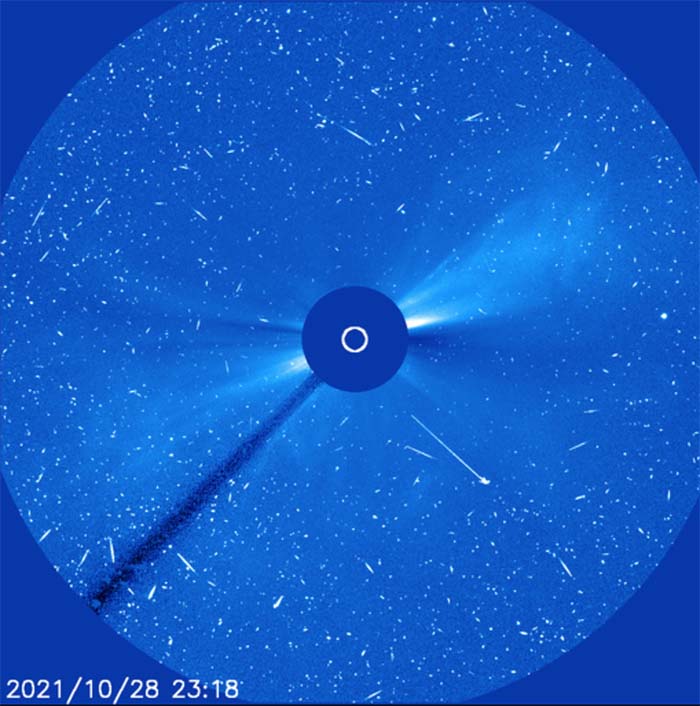
An X1
solar flare is capable of producing aurora visible all the way to
mid-latitudes. My property is at 34 south latutude. The solar wind that
produces auroral displays takes about 36-48 hrs to reach us. It
was predicted to reach Earth in the early morning hours of Sunday 31
October. I relaxed in the early part of the night then went out on
aurora watch at around 11pm.
Unfortunately, that flare didn't
arrive until after sunrise at my location so no aurora but I was
treated to the best airglow display I have ever seen. To the naked eye,
there was a faint colourless glow, the light not bright enough to
trigger my photopic or colour vision. However my scotopic or night
vision could faintly perceive it. It was however, easily recorded
on a still camera in all its glory.
Airglow is an atmospheric phenomena
that occurs at around 90km altitude and is caused by a variety of
chemical and photochemical reactions between atmospheric gases. Solar
radiation during the day can photo-ionise gases, cosmic rays spallate
through the atmosphere, and chemical luminescence can occur from
reactions between oxygen, nitrogen and free radicals in the upper
atmosphere.
This web page at the University of Albany lists seven different processes thought to cause airglow events.
https://www.albany.edu/faculty/rgk/atm101/airglow.htm
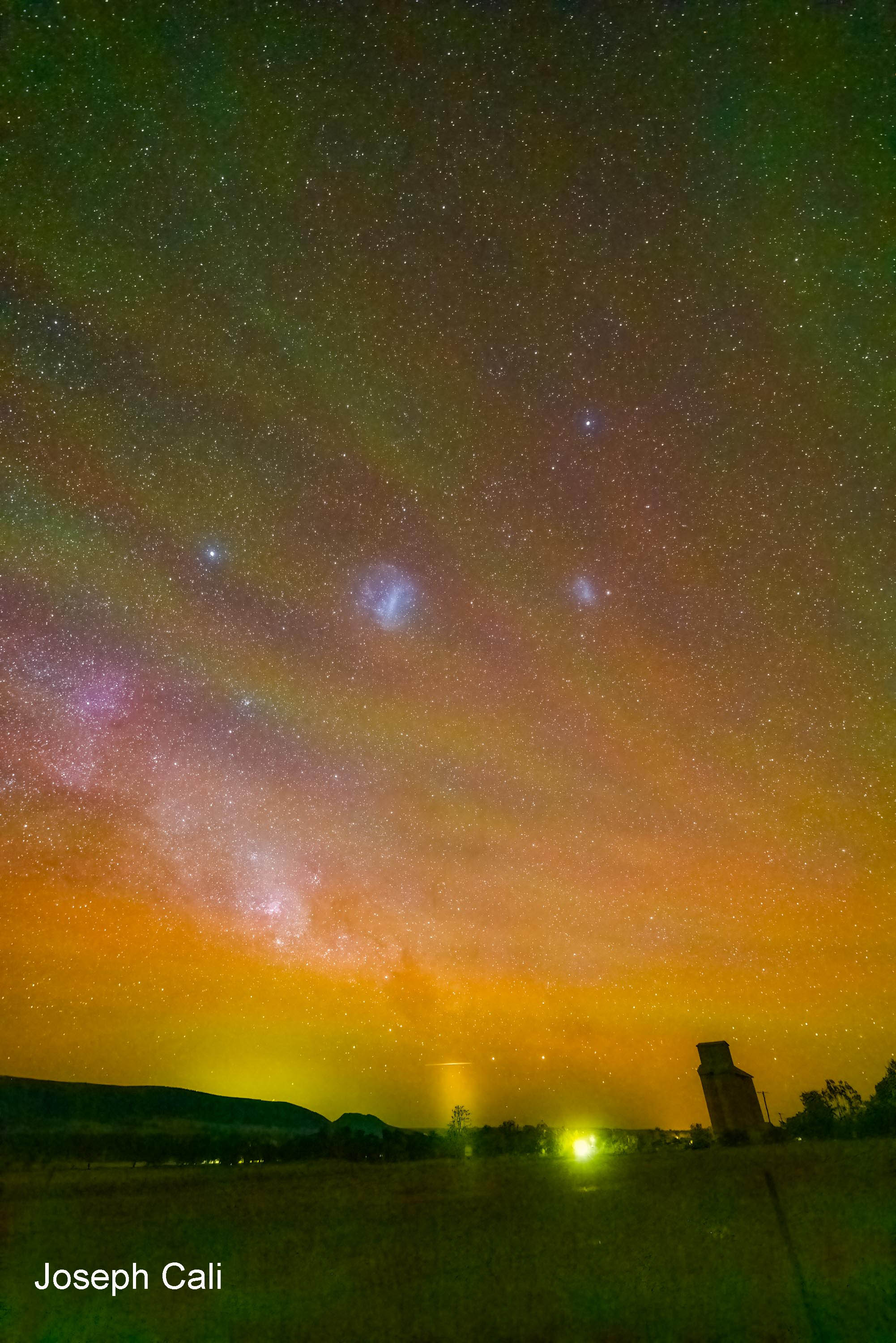 Storm growing in intensity at 13:05UT 12:05 am local time.
Storm growing in intensity at 13:05UT 12:05 am local time.
Pentax K1 ISO 12800 20s Samyang 14mm f2.8
The little streak near the pointers might be some starlink satellites.
Several appeared one after the other on the same orbital track.
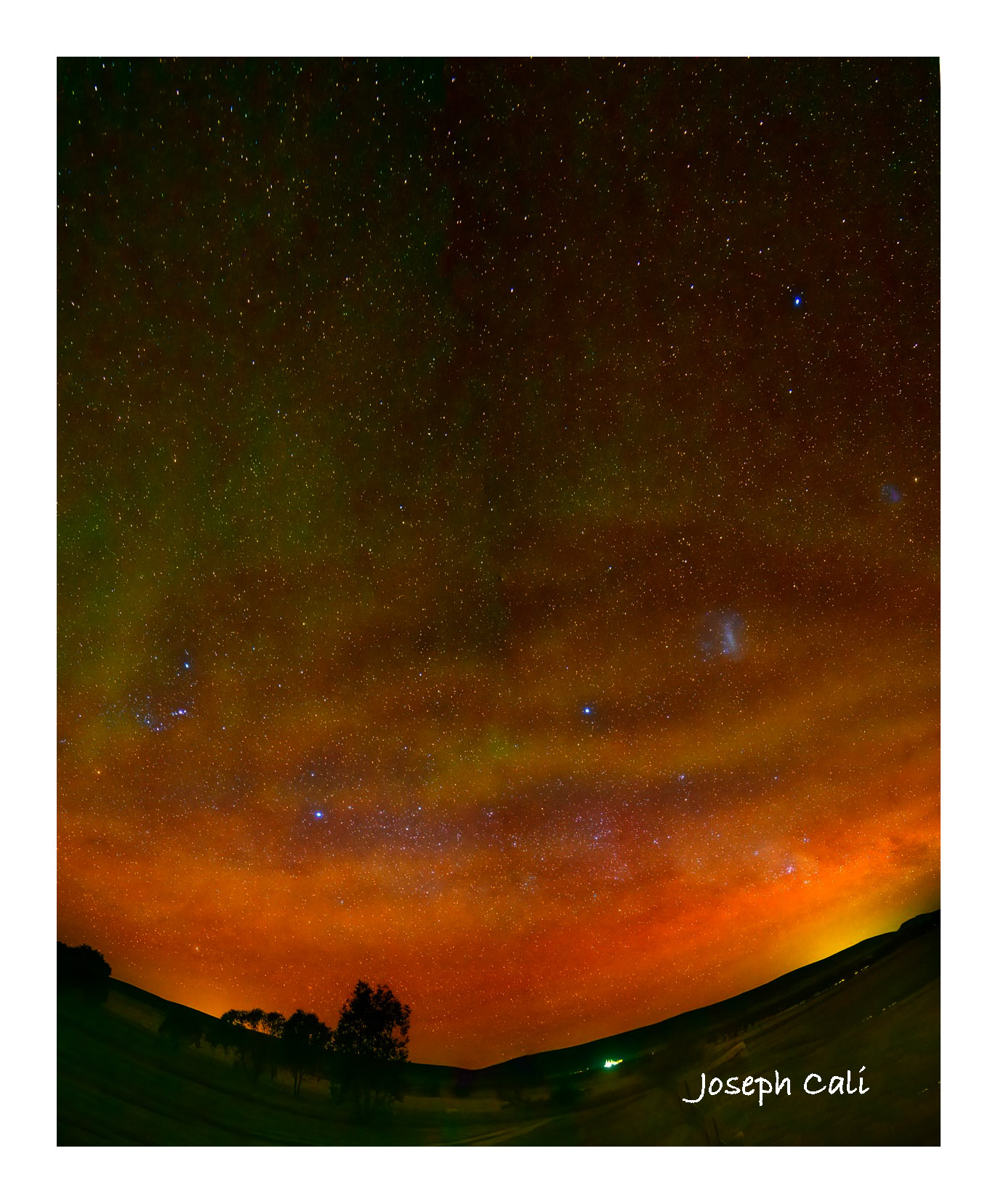 Above:
Pentax K1 ISO 12800 30s Samyang 14mm f2.8 This
photo was taken at 13:14 UT about
Above:
Pentax K1 ISO 12800 30s Samyang 14mm f2.8 This
photo was taken at 13:14 UT about
10 mins after the first photo I
posted (top) and when the event had strengthened.
In this image
you
can see Orion on the far left, Sirius and Canis Major left of centre with Canopus and the Magell
anic Clouds on the right. This photo spans the horizon north east through east to south.
Above:
Pentax K1 ISO 12800 30s Samyang 14mm f2.8 This
photo was taken at 13:46 UT about
an hour after the first photo I
posted (top) and when the event had strengthened.
In this image
you
can see Orion and Taurus above the north and north east horizon.
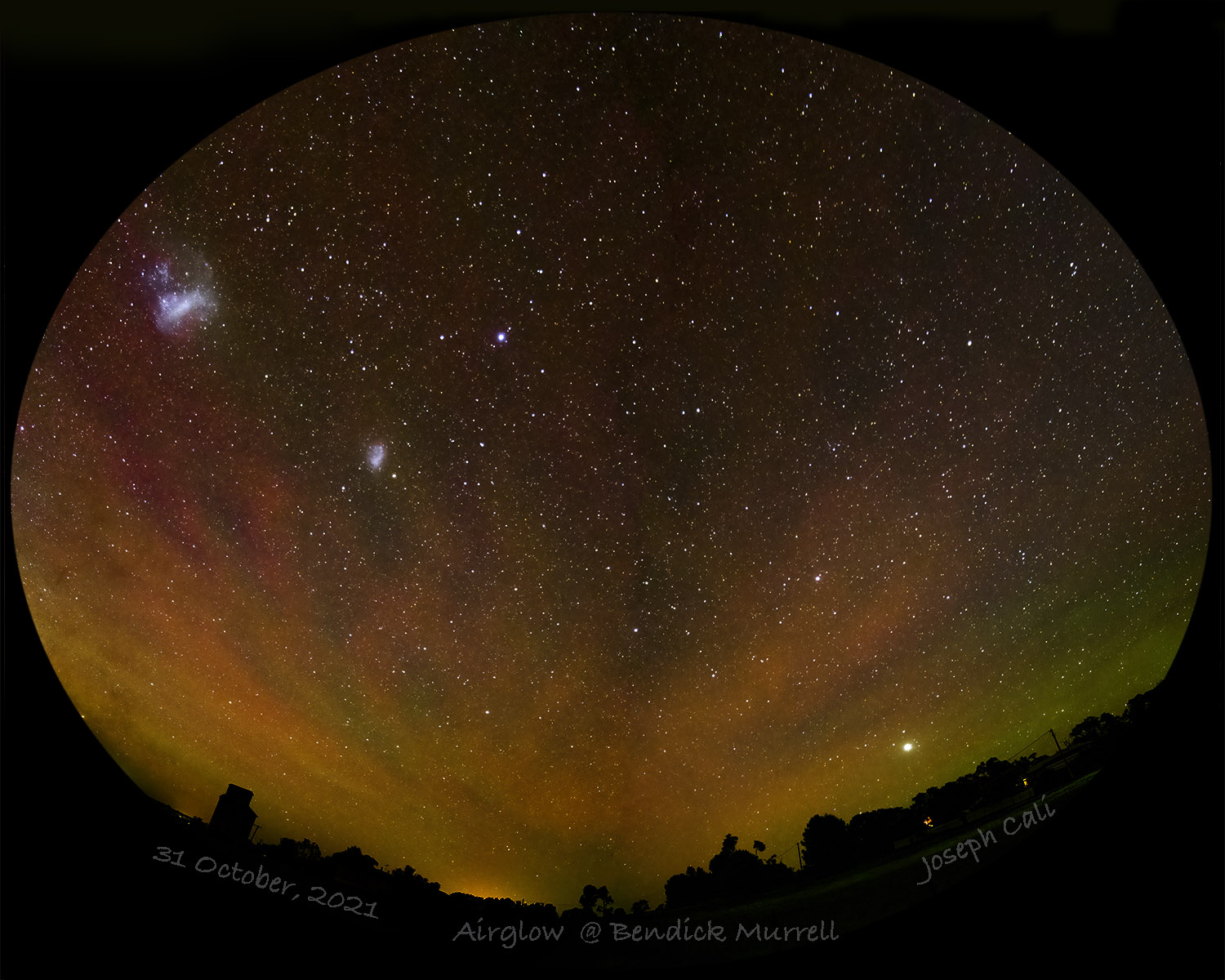
A multipanel panorama showing about 1/3 of the sky. 13:40UT
Pentax K1 ISO 12800 30s Samyang 14mm f2.8
Above: This
photo was taken at 13:57 UT about an hour after the
first photo I
posted (top) and when the event had strengthened.
In this image, you
can see the Magellanic Clouds (top) Pointers(lower left)
Jupiter (lower right) above the southern horizon.
Pentax K1 ISO 25600 30s Samyang 14mm f2.8
